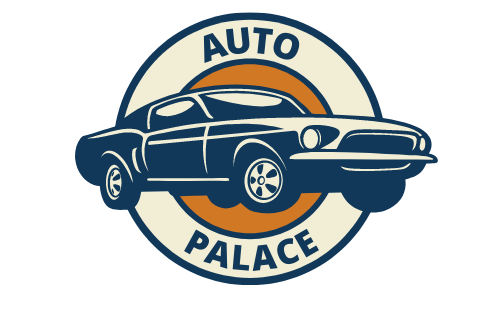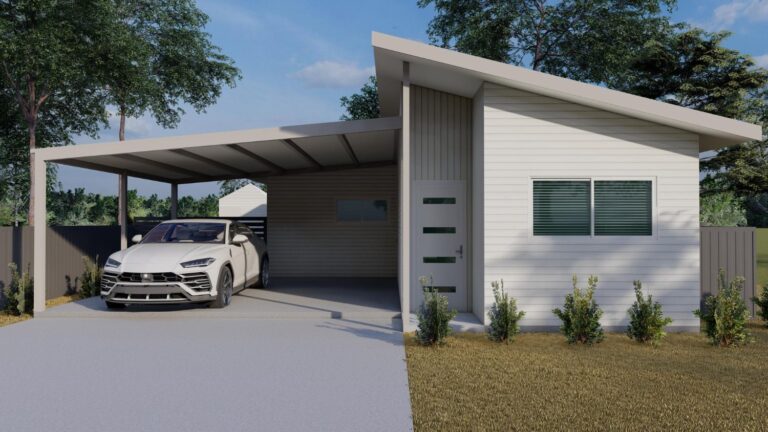Metal carports have been steadily gaining popularity as an alternative to traditional garages. They are versatile structures designed to offer protection for vehicles while being more accessible and cost-effective.
In this blog post, we’ll dive into the world of metal carports, examining their advantages and disadvantages. Our goal is to provide a detailed perspective on whether a metal carport is a viable addition to your home, considering factors like cost, durability, aesthetics, and functionality.
What is a Metal Carport?
A metal carport is a semi-open structure constructed primarily from metal materials, designed primarily to shelter vehicles. It stands apart from traditional garages with its open design – usually lacking one or more walls.
This simplicity offers both advantages and challenges. These carports are designed for quick access and easy maintenance, making them a practical choice for vehicle protection. They differ from the conventional garage in their minimalistic approach and flexibility in design, often requiring less space and investment.
The Pros of Building a Metal Carport
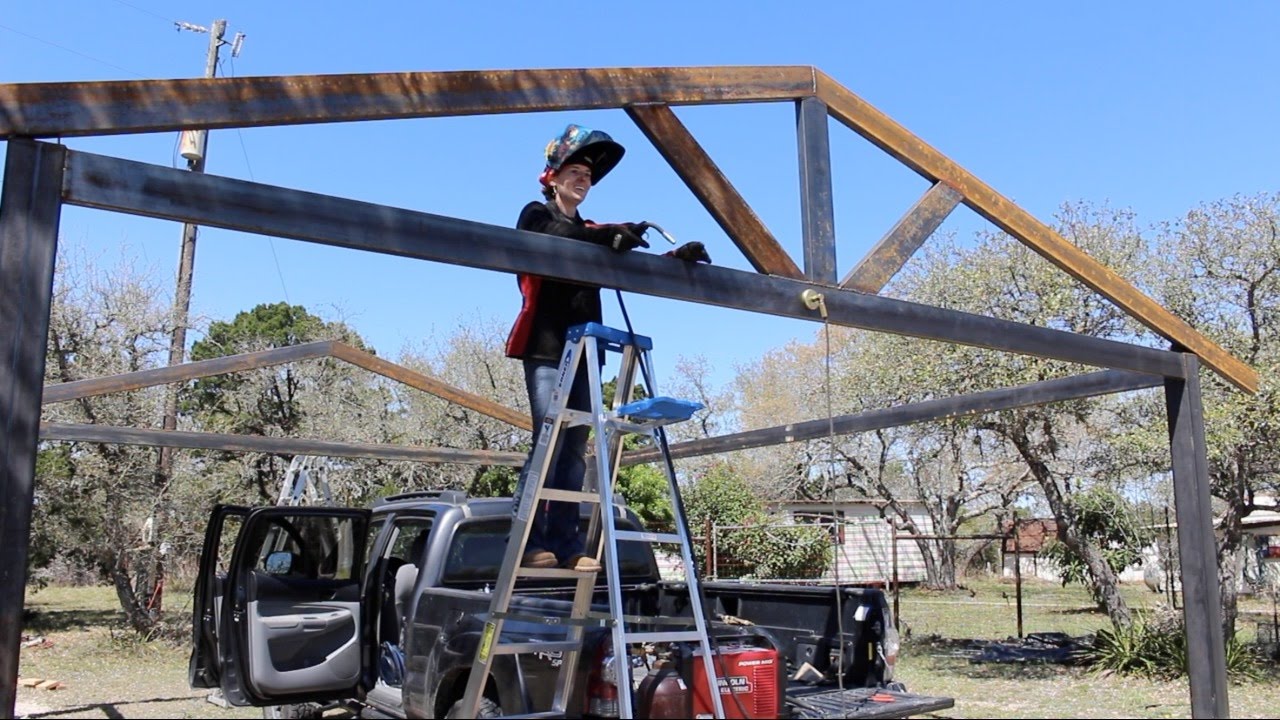
The benefits of installing a metal carport are varied and significant. Firstly, they are cost-effective. Compared to the expense of building a full garage, a carport often requires fewer materials and less labor, resulting in considerable savings.
Furthermore, the durability of metal makes these structures particularly resistant to various weather conditions, from heavy snow to high winds, ensuring a longer lifespan with minimal upkeep. Another key advantage is the versatility of design. Metal carports can be easily customized to fit specific spatial constraints and personal preferences, making them an adaptable solution for different types of properties.
Cost Savings
One of the most compelling reasons to opt for a metal carport over a traditional garage is its cost-effectiveness. The construction of a carport generally involves less material, which directly translates to lower costs. Also, you can consider installing solar panels to harness sustainable energy, further maximizing your cost savings and promoting environmental responsibility.
Additionally, the simplicity of the design often allows for a quicker and therefore cheaper installation process. Compared to the extensive groundwork and materials required for building a traditional garage, a metal carport is a financially savvy option for those looking to protect their vehicles without a significant investment.
Durability and Longevity
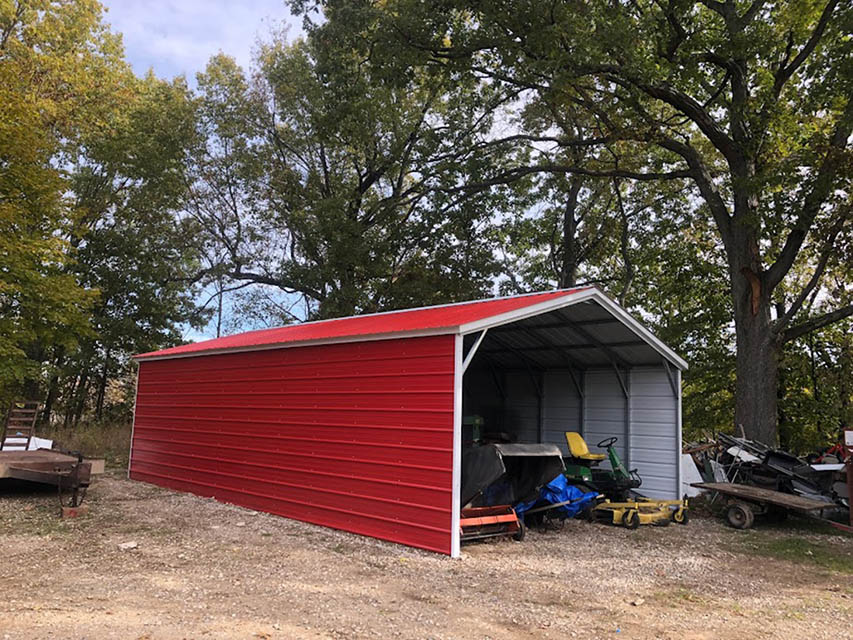
Metal carports are renowned for their durability and ability to withstand harsh weather conditions. Made from sturdy materials like steel or aluminum, these structures are designed to endure elements such as heavy rain, snow, and extreme temperatures.
This resilience translates to a longer lifespan and less frequent need for repairs or maintenance, unlike wooden or brick structures that may require regular upkeep. The corrosion-resistant properties of metal also play a crucial role in enhancing the longevity of these carports, making them a robust and reliable choice for long-term vehicle protection.
Versatility and Customization
The design flexibility of metal carports is another significant advantage. These structures can be tailored to fit various spatial requirements and aesthetic preferences. Whether you need a carport to fit multiple vehicles, incorporate additional storage space, or match the architectural style of your home, these carports can be customized accordingly.
This adaptability extends to the choice of colors, roof styles, and the addition of side panels or enclosures, offering homeowners the ability to create a carport that not only serves its functional purpose but also enhances the overall look of their property.
Quick Installation
Another benefit of metal carports is their relatively quick and easy installation process. Unlike traditional garages that may require extensive construction time, metal carports can often be assembled and ready for use in a much shorter time frame.
This swift installation is due to the prefabricated nature of most carport kits, which come ready to be assembled with all necessary components. For homeowners looking for a fast solution for vehicle protection, a carport presents an efficient and time-saving option.
Protection for Vehicles
The primary function of a metal carport is to provide effective protection for vehicles. By shielding cars from environmental elements like sun, rain, and snow, these structures help in prolonging the lifespan of the vehicle’s exterior and interior.
The coverage provided by a carport can prevent sun damage to paint and interiors, reduce the risk of hail damage, and keep vehicles relatively clean from rain and snow. This protective aspect is a key consideration for any vehicle owner looking to maintain the condition of their car or other vehicles.
The Cons of Building a Metal Carport
While metal carports have several benefits, there are also potential drawbacks to consider. Some homeowners may find the aesthetic appeal of metal carports less favorable compared to traditional garages.
Additionally, the open design of most carports means they offer limited storage space and security compared to a fully enclosed garage. It’s important to weigh these factors against the advantages to determine if a carport is the right choice for your needs.
Aesthetics and Visual Appeal
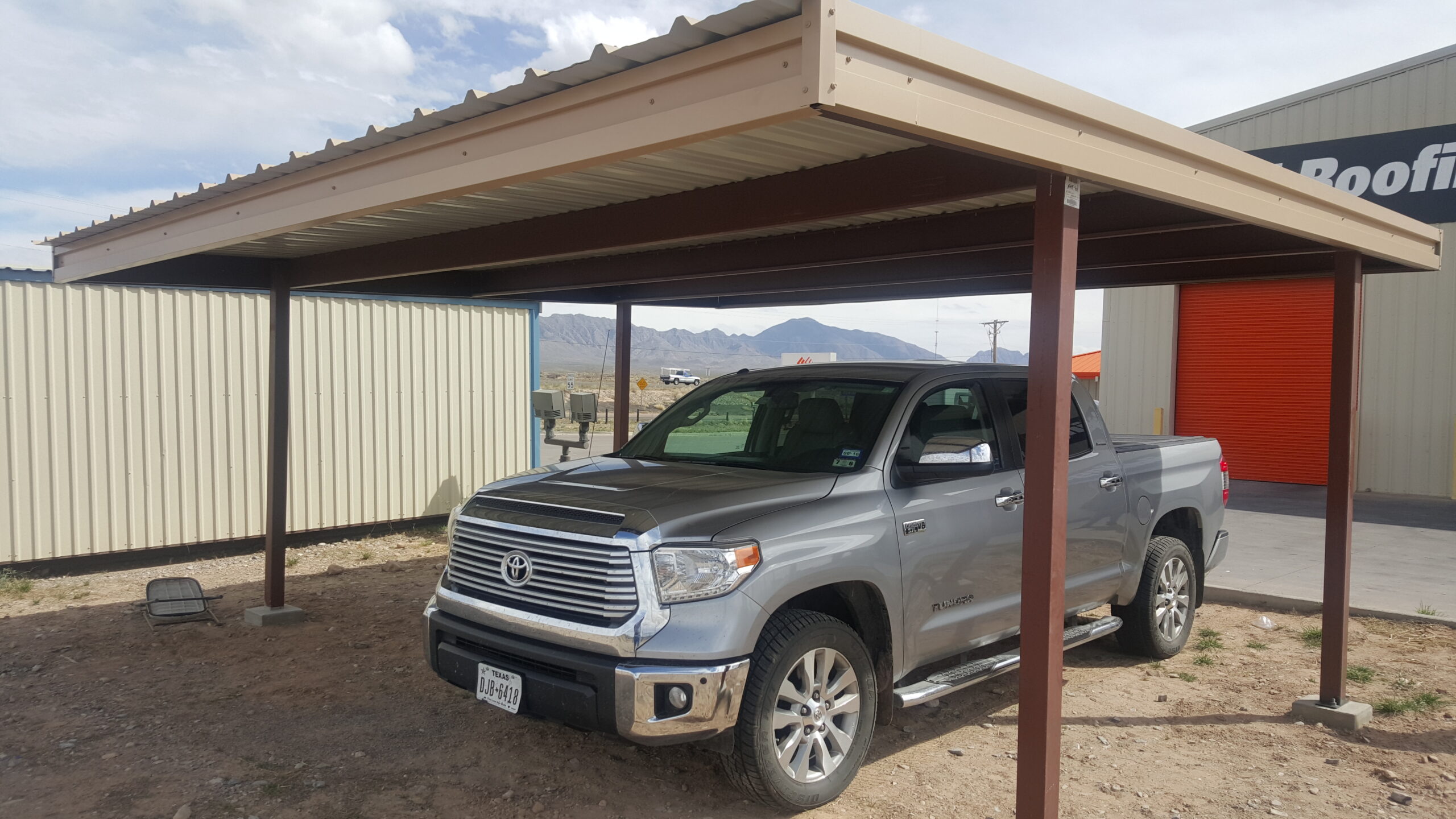
The visual appeal of metal carports can be a concern for some homeowners. Unlike traditional garages, which can be easily integrated into the architectural style of a home, metal carports may stand out as distinctly utilitarian.
However, with the range of customization options available, it is possible to enhance the aesthetic of a metal carport. Choices in color, roofing style, and the addition of side panels can help in creating a more visually appealing structure that complements the overall look of the property.
Limited Storage Space
Another consideration is the limited storage space offered by these carports. Unlike enclosed garages, carports typically do not provide secure, weather-protected storage for tools, equipment, or other items.
This limitation can be a significant drawback for those requiring additional storage space. However, innovative design solutions such as incorporating storage units or shelving can help maximize the utility of a carport, making it a more versatile space for storage as well as vehicle protection.
Conclusion
In conclusion, building a metal carport presents both advantages and challenges. Its cost-effectiveness, durability, quick installation, and vehicle protection capabilities make it an appealing option for many homeowners.
However, considerations around aesthetics and storage space are important to bear in mind. Ultimately, deciding whether to build a metal carport should be based on individual needs, preferences, and budget, ensuring that the chosen solution aligns with your specific requirements and lifestyle.
